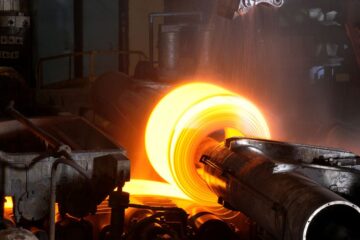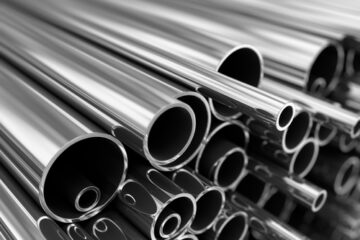Types of Stainless Steel and Their Applications
When it comes to modern construction, manufacturing, and design, few materials are as essential as stainless steel. Known for its strength, durability, and resistance to corrosion, stainless steel is used across almost every major industry. But not all stainless steel is the same — it comes in various types and grades, each suited for specific uses.
In this blog, we’ll break down the most common types of stainless steel, their properties, and where they’re most effectively used.
What Are Stainless Steel Grades?
Stainless steel is classified into different grades, based on its chemical composition and structure. The most widely recognized grading systems are:
- AISI (American Iron and Steel Institute)
- EN Standards (European Norms)
- IS (Indian Standards)
Each grade has unique characteristics and is chosen based on the performance required in a specific application.
1. Austenitic Stainless Steel (e.g., 304, 316)
Key Features:
- High corrosion resistance
- Non-magnetic
- Excellent weldability and formability
Applications:
- Kitchen utensils and appliances
- Medical equipment
- Chemical and food processing industries
- Marine environments (especially grade 316)
Common Grades:
- 304 Stainless Steel: The most commonly used grade. Ideal for general-purpose use.
- 316 Stainless Steel: More resistant to corrosion, especially in saltwater or chemical settings.
2. Ferritic Stainless Steel (e.g., 409, 430)
Key Features:
- Magnetic
- Moderate corrosion resistance
- Lower cost than austenitic steels
Applications:
- Automotive parts (like exhaust systems)
- Indoor architecture
- Kitchen appliances (less critical parts)
Common Grades:
- 430 Stainless Steel: Widely used in decorative trims and appliances.
- 409 Stainless Steel: Often found in auto industry applications.
3. Martensitic Stainless Steel (e.g., 410, 420)
Key Features:
- High strength and hardness
- Less corrosion resistance
- Can be heat-treated
Applications:
- Cutlery and blades
- Surgical instruments
- Valves and pumps
Common Grades:
- 410 Stainless Steel: Durable and hard, often used in tools and fasteners.
- 420 Stainless Steel: Used for razor blades, knives, and surgical tools.
4. Duplex Stainless Steel (e.g., 2205)
Key Features:
- Combination of austenitic and ferritic structures
- Superior strength
- Excellent resistance to stress corrosion cracking
Applications:
- Oil and gas pipelines
- Marine structures
- Chemical processing
Common Grade:
- 2205 Duplex: Preferred for highly corrosive environments where strength is critical.
5. Precipitation-Hardening Stainless Steel (e.g., 17-4 PH)
Key Features:
- High strength and hardness
- Good corrosion resistance
- Heat-treatable
Applications:
- Aerospace parts
- Nuclear waste casks
- High-performance engineering applications
Choosing the Right Type of Stainless Steel
Selecting the right type of stainless steel depends on your industry, environment, and durability needs. For example:
- Use 304 or 316 in kitchens and hygiene-sensitive areas.
- Choose duplex steel for marine or industrial projects with heavy chemical exposure.
- Opt for martensitic grades when strength and sharpness are needed.
Why Knowing the Type Matters
Using the right stainless steel:
- Extends the lifespan of your products
- Reduces maintenance costs
- Enhances safety and performance
- Meets industry-specific regulations
At Real Time Metal, we help businesses choose the best material for their projects. Whether you’re in manufacturing, construction, automotive, or consumer goods, we guide you through quality steel selection every step of the way.
Conclusion
Understanding the different types of stainless steel is key to making the right choice for your business. Each grade has its strengths — and when matched with the right application, stainless steel delivers unmatched performance and value.
For high-quality stainless steel and expert support, trust Real Time Metal — where innovation meets metal excellence.


0 Comments